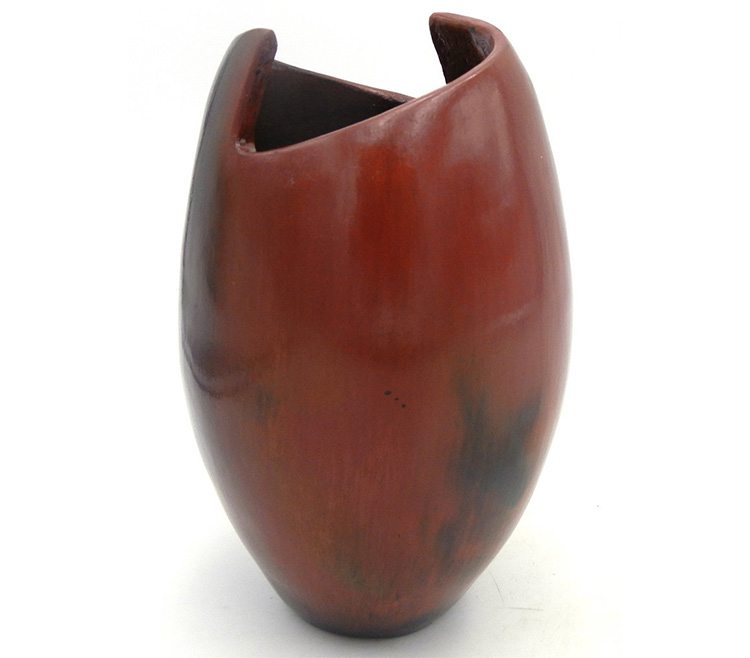There’s something about traditional Navajo pottery that seems almost magical. Whether it was crafted as a functional piece or as a ceremonial offering, Navajo pottery is both complex and simplistic at the same time.
It’s no secret why more and more people are searching for authentic items, but there is a big problem with forgeries when it comes to Native American pottery. Fakes are often passed off as the real thing, which diminishes the industry and the tradition of the Navajo people.
Let’s take a closer look at some of the ways you can tell if your traditional Navajo pottery is the real thing so you can purchase with confidence and add authentic pieces to your collection.
A Brief History of Navajo Pottery
Navajo pottery history is rich and diverse, reflecting the cultural and artistic traditions of the Navajo people. Pottery has been created for hundreds of years, both for household and ceremonial use, and traditionally, Navajo pottery is left undecorated. In the late 19th century, as railroads brought tourists into the Navajo region, pottery making as an art form became more prevalent.
To create pottery in the Navajo tradition, Navajo pottery artists often mix together several different clays to get the aesthetic and physical qualities they want. After the pots are fired and before they are allowed to cool, a hot, melted pitch from piñon trees is applied to coat the pot and create a glossy finish.
Some tribes grind up old pot shards and mix them into raw clay powder as part of the process, which is called temper, but the Navajo feel old pottery shards belong to their forefathers and shouldn’t be removed from the ground. Today, Navajo clay pots are usually fired outdoors in an open pit one at a time with juniper wood under and over each pot.
Most Navajo pottery designs are traditionally simple, but some artists use pastel colors and fine hand-edged designs. Some even utilize strands of horsehair during the firing process to create scribbles of black lines, mimicking the look of smoky shadows.
Warning Signs of Counterfeit Navajo Pottery
Identifying counterfeit Navajo pottery can be challenging and is usually best left to experts who have experience spotting discrepancies and other issues. However, if you come across pottery that is said to be genuine Navajo, here are some signs to watch for:
- Uneven patterns, irregular shapes, or noticeable variations in design
- Sloppy paintwork, uneven breaststrokes, or bleeding colors
- Deviations from traditional Navajo designs or motifs
- Lack of a signature or hallmark on the pottery
- Lack of consistency in the thickness of the vessel
- Rough or uneven textures that could indicate low quality or mass production
- No natural signs of aging
- Pricing that seems unusually low
- Lack of documentation about the history of ownership
Tips for Spotting Real Navajo Pottery
If you’re unsure about the authenticity of Navajo clay pottery, it’s always a good idea to consult art appraisers or reputable dealers who specialize in Native American art. Authentic Navajo pottery is known for its unique visual and tactile characteristics that reflect the artistry and experience of Navajo artists.
Individual artists tend to have their own unique style, but there are some common features that should be present in any piece of genuine Navajo pottery for sale. Here are some tips to help you spot the real thing.
Material
Navajo potters traditionally use local clays, often gathered from specific areas, which contribute to the unique color and texture of the pottery. The clay may vary in color, ranging from red to brown or tan.
Technique
Pottery is often hand-coiled, a technique where long coils of clay are stacked and smoothed to create the vessel’s shape. The coiling process may leave subtle spiral or stacking patterns on the inside of the pot.
Texture
The surface should feel smooth and polished. The tactile experience can provide a sense of the craftsmanship and quality of the piece.
Appearance
Authentic Navajo pottery is meticulously polished to achieve a smooth, shiny surface. The polishing process, often done with a stone or smooth tool, creates a distinctive sheen and enhances the visual appeal of the pottery.
Traditional Navajo pottery does not showcase any designs and is only coated with pine pitch to give it a shine. Including cultural symbols and elements is a practice highly discouraged by Navajo elders to preserve privacy.
The Significance of Certifications and Provenance in Validating Authenticity
Two of the most important elements used for identifying authentic Navajo pottery are a Certificate of Authenticity and a Letter of Provenance.
A COA certifies that the artist on record for creating a particular piece is, in fact, the artist. It should be issued by the artist or an authorized representative. A Letter of Provenance, or LOP, helps identify the history of ownership, which can go a long way toward authenticating your pottery.
Take Precautions Before Making Your Purchase
It’s easy to get caught up in the beauty of any piece of art, and that’s no different when it comes to Navajo art pottery. You never want to end up missing out on a great piece for your collection, but it’s also important to take precautions. To ensure every piece you own is genuine, go through the necessary steps and have it looked at by a professional.
At Palms Trading, we are all about preserving the culture and traditions of Indigenous tribes in the Southwest, and you can feel confident any piece of Navajo pottery you purchase through us is the real thing.
Take a look at our selection to find something you like, or reach out to us today if you have any questions.



